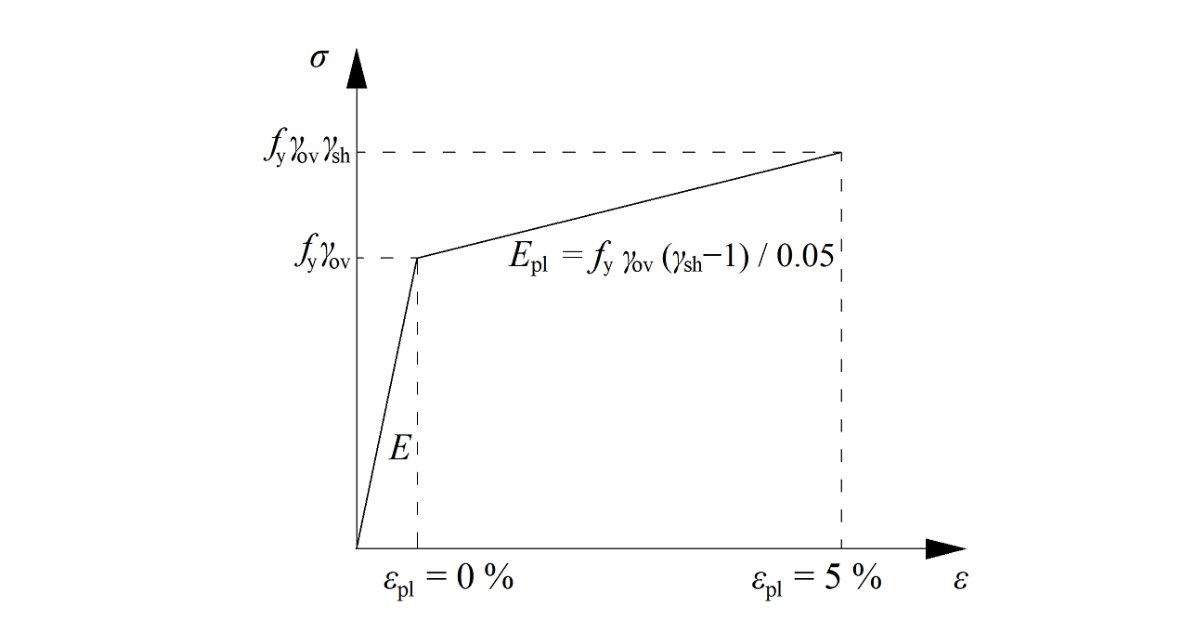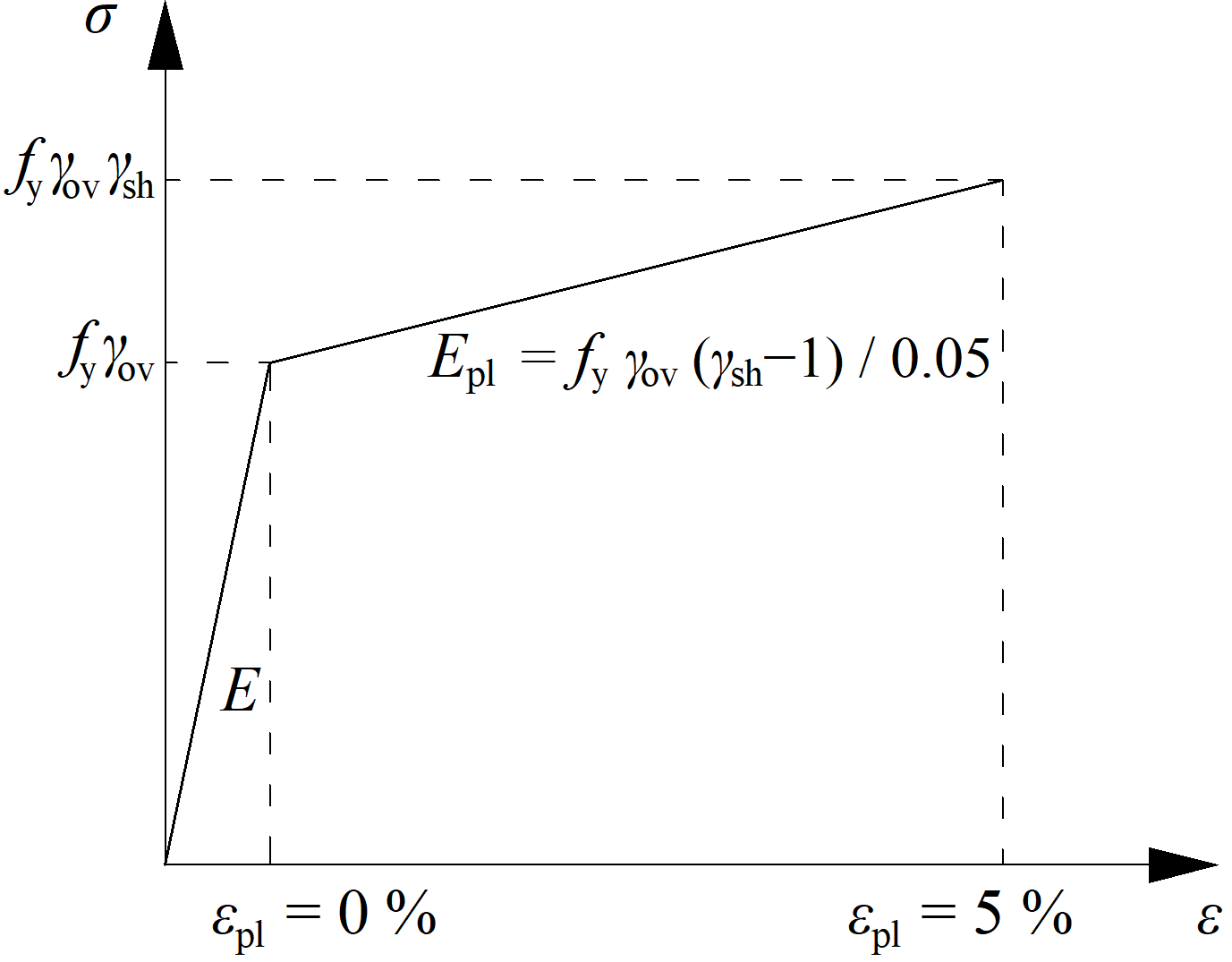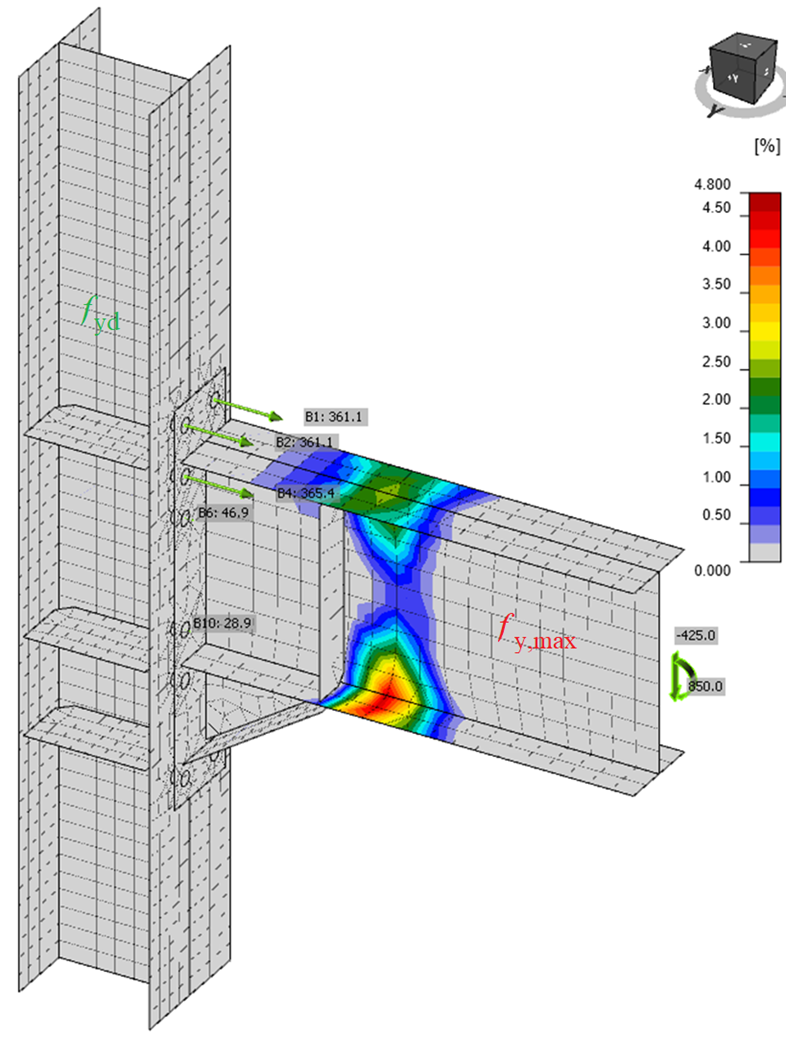Progettazione in capacità della connessione in acciaio
La progettazione in capacità (gerarchia delle resistenze) è una parte della progettazione antisismica e della verifica del giunto. Laddove si fa affidamento sulla duttilità di una struttura, è necessario eseguire la gerarchia delle resistenze.
L'obiettivo della gerarchia delle resistenze è quello di confermare che un edificio abbia un comportamento duttile controllato per evitare un collasso in caso di terremoto di livello progettuale.
Viene selezionata una struttura dissipativa con una maggiore resistenza e un diagramma dei materiali modificato. Vengono definiti un fattore di sovraresistenza (\gamma_{ov}\) in Materiali e un fattore di incrudimento \(\gamma_{sh}\)al funzionamento della struttura dissipativa. Si noti che la nomenclatura differisce tra i codici. Un elemento dissipativo è escluso dalla verifica di sollecitazione delle piastre.
Diagramma di materiale modificato per l'elemento dissipativo
IDEA StatiCa Connection verifica la connessione sulla base del carico di progetto applicato, che dovrebbe creare una cerniera plastica nella struttura dissipativa selezionata, di solito la trave. La deformazione plastica della struttura dissipativa deve essere del 5% circa. Ciò può servire a confermare che l'entità e la posizione dei carichi sono state determinate correttamente.
La cerniera plastica si verifica nel punto previsto dell'elemento dissipativo: la trave
I vincoli dell'elemento continuo sono automaticamente definiti con supporto a un'estremità e con momenti limitati all'altra estremità. In questo modo, il pilastro continuo può essere sottoposto a forza normale e a forze di taglio, e inoltre un lato può spostarsi lateralmente in modo da rivelare il cedimento dell'anima del pilastro a taglio.
Si noti che i dettagli sono molto importanti per i giunti antisismici, ma non sono verificati in IDEA StatiCa.




